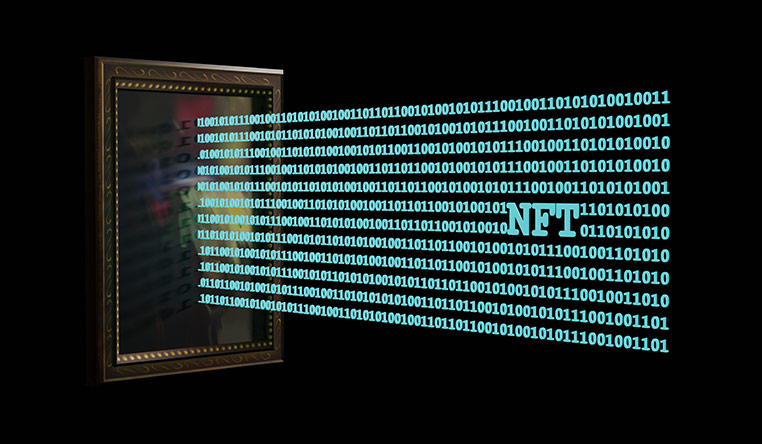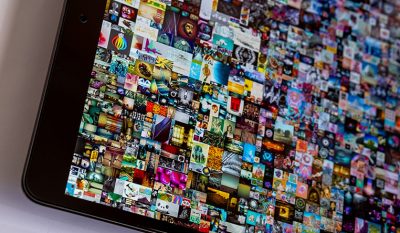NFT technology has been around for a decade already. But in recent weeks, NFTs have become one of the hottest online trends. It’s the talk among celebrities, artists, and investors with questionable amounts of money, motives, and time on their hands. If you’re curious about what NFTs are and why they’re so popular, here’s what you need to know.
What are NFTs?
NFTs stand for “non-fungible tokens” which are unique digital assets that can be traded through the blockchain or bought in exchange for cryptocurrency. They can be anything from digital artworks, fashion designs, rare sports cards, and digital sneakers to music, videos, social media posts, and even memes.
When a buyer purchases an NFT, the token acts as a receipt that certifies its original authenticity and ownership. Every token is completely unique, non-interchangeable, and can be bought and sold just like any other item. Unlike real-world art, antiques, or collector’s items, however, they do not hold any physical or tangible value.
How do you buy and sell NFTs?
Let’s say an artist wants to sell one of their finest paintings as a digital file. They can register the file as an NFT on a blockchain marketplace or with digital ledger (what’s commonly known as ‘minting’). From that point, anyone is free to purchase it.
An artist puts NFTs up for auction on these sites, and buyers bid for them. However, some listings let you purchase them immediately. First, the buyer pays for the file in cryptocurrency. The generates public record of the sale, and that person becomes the new registered owner.

Why are NFTs So Popular?
You might be thinking, “Who on earth would pay thousands of dollars for something that people can see online or download for free?” There’s something about the human mindset that loves to have something no one else has got. Whether it’s the Mona Lisa, Darth Vader’s Helmet, or Paris Hilton’s pubic hair — NFTs is another avenue for the world’s wealthy to get their hands on something exclusive and be able to prove it to others.
The Exclusive Factor
Remember the Pokemon card craze in the nineties? Every kid and his grandma was a collector, and this is where NFTs have the exact same appeal. Instead of chasing a shiny Charizard, people now want to own a viral clip like ‘Nyan Cat’ or an original drawing of a movie star despite the fact it’s been distributed and seen online thousands of times already.
A Virtual Piece of Real Estate
Where the super-rich and famous start, the rest of us grovel behind. Many people in this world consider their possessions as an extension of their personality and interests. This can easily be seen in their online lives, too. And while you can’t physically put an NFT on display in your house or parade it around your neighborhood, you can boast about it to your online peers and close circles instead.
Tons of Money

Some of the weirdest and most unconventional things have been sold as NFTs, and there’s a huge demand for them in the blockchain market. GIFs, tweets, and memes have sold for ludicrous amounts of money in the past, and yep, we’re talking seven figures.
This is obviously wonderful news for digital artists and creators whose works have hit the mainstream. They have the ability to earn enormous amounts of cash for a joke project they made in college. They can continue to see it being enjoyed and admired online by all.
The high demand for NFTs and celebrity boost also brings good news for buyers and collectors. Like antiques and one-of-a-kind artworks, the value of these items continues to increase. This means the digital market can be just as financially rewarding for investors as the physical one.
Convenience and Accessibility
Despite there being a lot of cash to make, NFTs belong to a globally accessible marketplace where anyone can do trade without worrying about packing and shipping costs or finding a space to store items.
Having your foot in the world’s online community means you can conveniently search, purchase and own just about whatever you want in a few minutes. It could be a clip of a monkey riding a pig or a digital caption of a key moment in sports. There’s no need to hunt it down or wait weeks for the courier to bring it to your doorstep.
Immune to Loss or Breakages
While expensive collector items are susceptible to loss, damage, and even ‘acts of God’ like flood and fire, NFTs aren’t at the mercy of any of these kinds of problems. This gives them long-lasting value and durability. However, what they are not entirely immune from is theft.
Digital artwork, in particular, is a huge target for hackers and online criminals. There have been reports of them being stolen in the past, as well as credit card details used to complete the purchase. These are exceptionally rare instances, though. The online marketplace is much more secure these days than it was ten years ago.
Fewer Counterfeits
Due to the authenticity of NFTs, every item is trackable and publicly recorded. This gives the consumer confidence that there is less risk of purchasing something fraudulent or fake. Theoretically speaking, they’re buying something that can’t be duplicated.
This is completely different from buying and selling on web-based marketplaces like eBay or Etsy. Buyers can purchase an expensive item, only to discover it’s a fake or a replica when it arrives.
Money Laundering
Money laundering is a big problem in the art world and with other areas of the crypto marketplace. Given the infancy of NFTs, there is no concrete data that suggests the market is being exploited to wash dirty money. But that doesn’t stop it from being tainted with headlines like “the best method for money laundering in the cryptocurrency world.”
Some of the most outlandish items may suddenly become hugely popular and increase in value. But that doesn’t mean any suspicious transactions or activities are taking place. What may be a cause for concern, however, is the valuation of digital assets. The industry’s lack of regulations indicates that NFT marketplaces will eventually implement AML-standard guidelines instituted by physical art dealers and marketplaces. This will make it much harder to pull off scams and launder money.
NFTs: A Passing Fad?
Like any exciting craze or novelty, it’s tough predicting just how far the NFT industry will go before another bandwagon takes its place. At one point, everyone thought Facebook would meet the same death as Myspace. Yet the $279 billion-dollar platform is still going strong today.
With the types of things we put value to this day in age? One can only wonder what absurdities we’ll be trying to flog online in another ten years. A digital blueprint of Hitler’s orchiectomy, perhaps?







